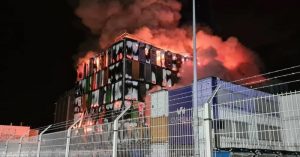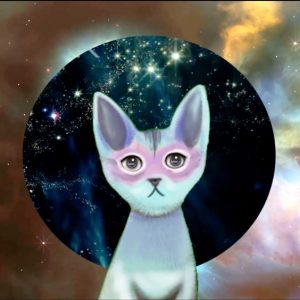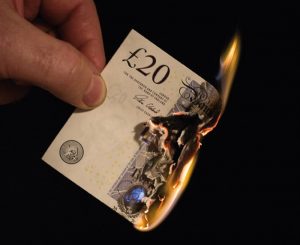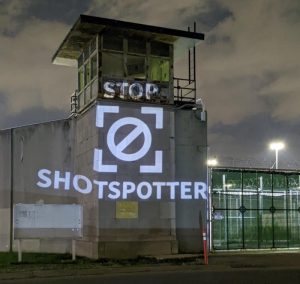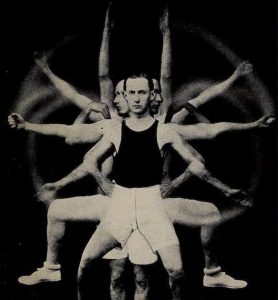SUPERFLEX. We Are All in the Same Boat, with texts by curator Jacob Fabricius, urban geographer Stephanie Wakefield, curator Gean Moreno, Professor of Latin American Studies George Yudice and science-fiction writer Mark von Schlegell. Published by Hatje Cantz.
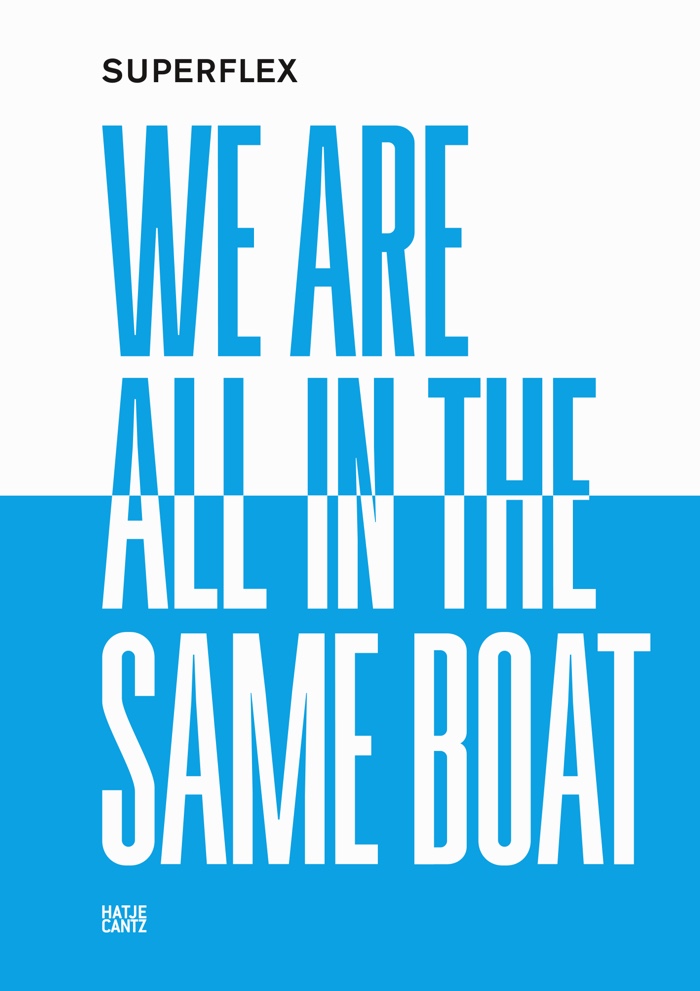
Summary of the book: The critically-acclaimed Danish artist group SUPERFLEX, founded in 1993 by Jakob Fenger (b. 1968), Bjørnstjerne Christiansen (b. 1969), and Rasmus Nielsen (b. 1969), create humorous and playfully subversive installations and films that deal with financial crisis, corruption, migration, and the possible consequences of global warming. The artists describe their practice as the provision of “tools” that affect or influence social or economic contexts, and often root their projects in particular local situations, inviting the participation of viewers. Their work poses questions of political, economic, and environmental behavior and responsibility. This catalogue accompanies the group’s first major museum survey in the United States and highlights video, sculpture, and installation works relevant to the history, present, and future of cities like Miami, poised on the leading edge of pressing issues such as climate change and immigration.
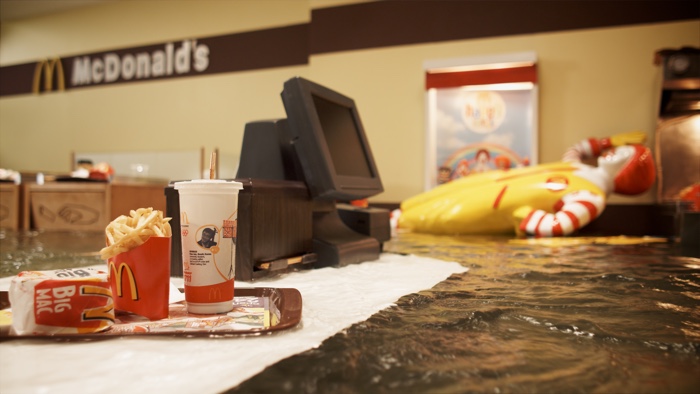
SUPERFLEX, Flooded McDonald’s, 2008
I saw SUPERFLEX’s Flooded McDonald’s many years ago. The film is set inside the life-size replica of a deserted McDonald´s fastfood gradually flooding with water. At first, the idea sounded funny. But as water was rising so was the tension. The film heralded a time when nothing, perhaps not even the most brutal forms of capitalism, would be able to interrupt the effects of global warming.
It was 2008 and the film was not only premonitory, it was also pure SUPERFLEX. It weaved together darkness and the humour, pop culture and environmental anguish, capitalism and provocation, etc.
Over time, the artists have realized bold works that confront some of modern society’s most unsavoury aspects with free goods, free beers, resistance to social control, calls for solidarity and of course tools! They are one of the very few artists whose works you can encounter in fancy art museums, in agricultural areas, in ordinary commercial shops, in the street or in a Turkish restaurant.
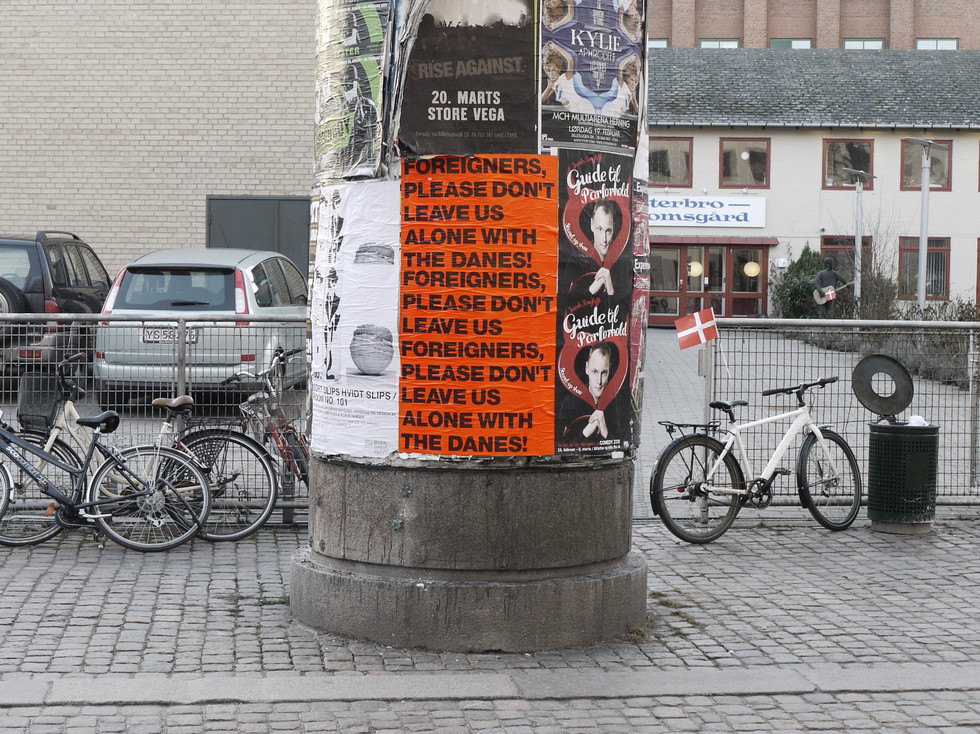
SUPERFLEX, Foreigners, please don’t leave us alone with the Danes, 2002
SUPERFLEX. We Are All in the Same Boat is the publication that accompanies the exhibition of the same name at the Museum of Art and Design at Miami Dade College (MOAD) in Miami.
It’s not a catalogue. That would be too boring for SUPERFLEX. It’s a little volume that opens on pages and pages printed in blue and white. The kind of blue you associate with Miami. The kind of blue of the water you imagine will one day wipe Florida off the map if we continue to respond to environmental urgency with indifference and inefficient measures. The pages are printed with photo documentation of SUPERFLEX works. The essays don’t start before page 143. They are worth the wait.
Professor of Latin American Studies George Yudice pens a fascinating essay that places SUPERFLEX’s work in the context of the city of Miami. As you read his text (and the ones of the other contributors) you realize why Miami is the perfect setting for a SUPERFLEX exhibition. The city presents many of the problems that characterize our times: immigration, tax havens, inequality, gentrification, money laundering, climate change, narcotraffic, etc. Anything you can find in big cities seem to grow in an exacerbated, almost vexing, way under the Miami sun.
Urban geographer Stephanie Wakefield and curator Gean Moreno explore a contemporary art economy in which artworks are regarded as a commodity. They posit that the tools that SUPERFLEX proposes have the potential to open up new spaces of possibilities: they can be used as incitements, provocations, gift and instruments to fight against forms of enslavement.
Science-fiction writer Mark von Schlegell gives us a glimpse of one of the future versions of Miami. We’re in 2099, the main protagonist of his short-story lives on a houseboat in Miami, an independent entity cut from mainland USA by sea rise. Against all odds and floods, the city has managed to to reinvent itself and keep its hedonistic lifestyle. Adaptation to the new aquatic condition of the city are shrewd, ecological (if that’s still a concept in 2099) but, as undersea wedding chapels linked to human trafficking demonstrate, the new version of Miami has lost nothing of its dark edge.
If you love SUPERFLEX’s work as much as i do and you’re curious about life on a planet that’s lost most of its coastline but none of its resourcefulness then you might enjoy this little publication.
Here’s a a handful of works by SUPERFLEX:
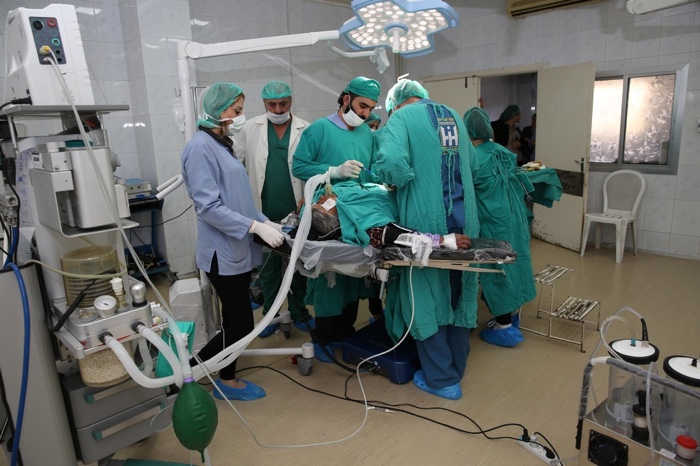
SUPERFLEX, Hospital Equipment, 2014. Photo: Mr. Ali Shahin
Hospital Equipment is a piece of “readymade upside-down.” The artist sourced and delivered operating theatre equipment to hospitals in conflict areas. The surgical equipment is first displayed as installation in a gallery. When the exhibition ends, the equipment is shipped directly to a selected hospital in a conflict zone to be used as potentially lifesaving medical instrument by doctors and nurses, rather than works of art to be contemplated. The photographic documentation of the installation remains with the collector who purchased the work. The first equipment was sent to a hospital in Gaza. The second one to a hospital in the western Syrian city of Salamiyah.
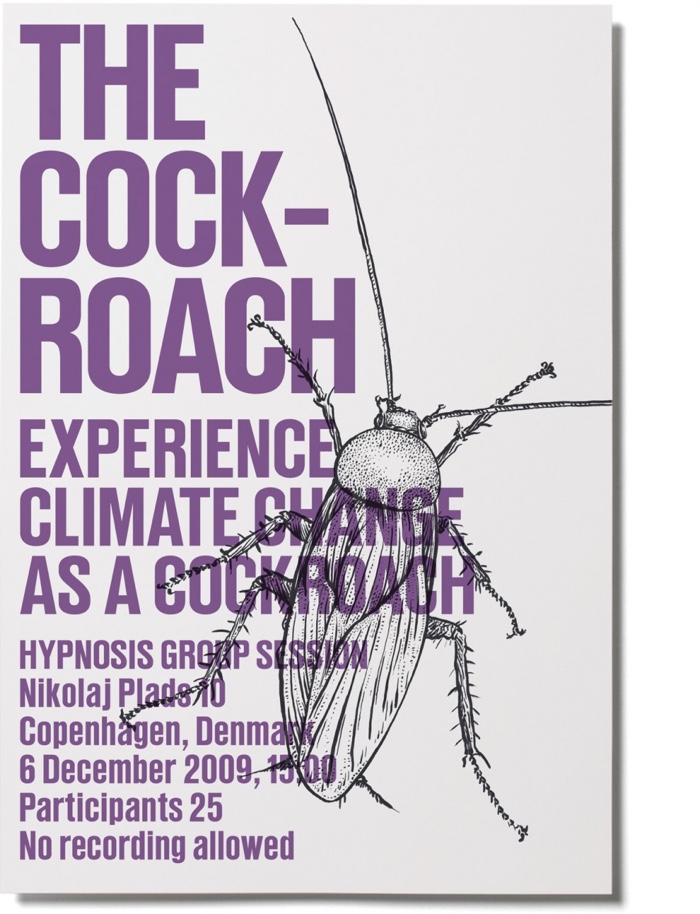
SUPERFLEX, Experience climate change as a Cockroach, Copenhagen, 2009. Graphic design by Rasmus Koch Studio
As part of the official cultural program in connection with the UN Global Climate Summit in Copenhagen 2009, SUPERFLEX offered a group session in which participants were hypnotized in order to perceive climate change as cockroach. Five more sessions were planned to happen on different locations concerning different animals.
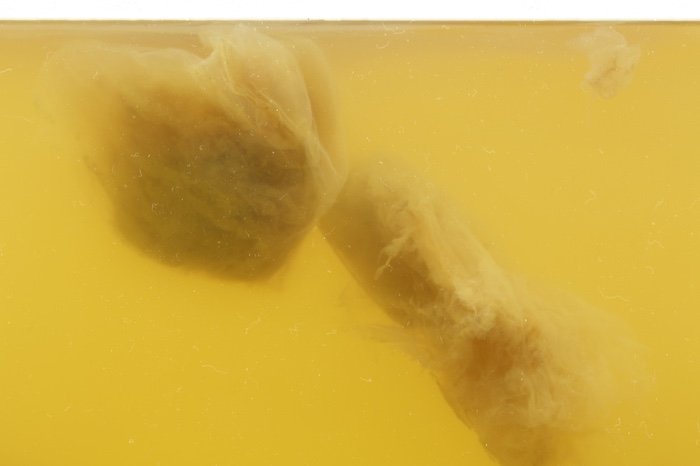
SUPERFLEX, The Fermentation Act, 2016. Photo: Keizo Kioku. Courtesy: 21st Century Museum of Contemporary Art, Kanazawa
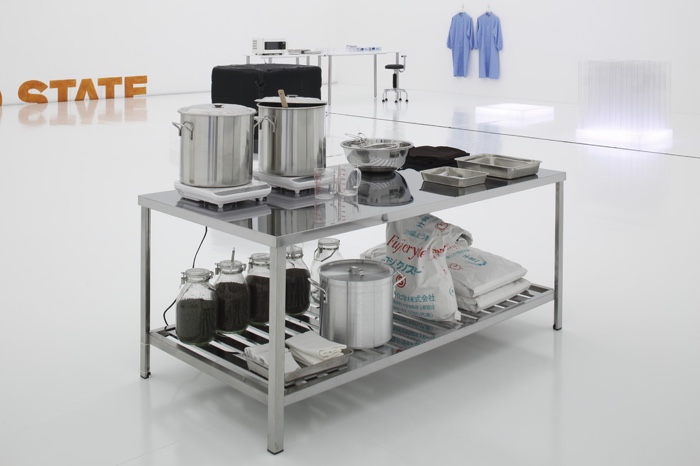
SUPERFLEX, The Fermentation Act, 2016. Photo: Keizo Kioku. Courtesy: 21st Century Museum of Contemporary Art, Kanazawa
Water is drawn from the air in the exhibition space, collected and heated with tea. The tea is then fermented with sugar the kombucha fungus. After the fermentation process, the liquid is poured into glass jars and stored on shelves. Depending on the type of tea used, the colours and flavours vary and create a museum of colourful teas produced from human body perspiration.
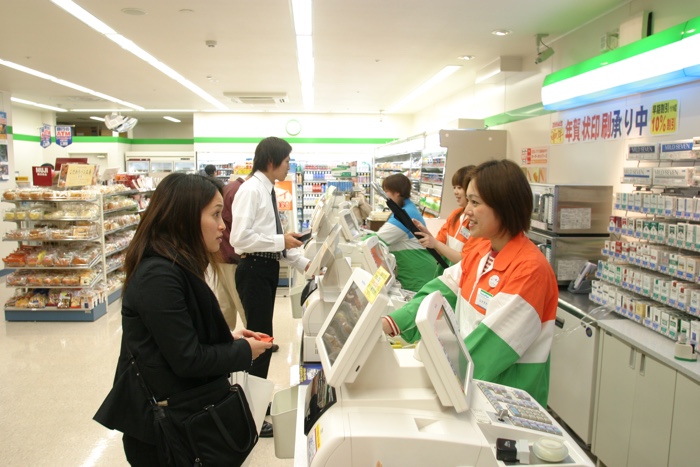
SUPERFLEX, Free Shop (Family Mart, Tokyo), 2003
Free Shop takes place in an ordinary shop, anything purchased in the shop by any given customer, on the days of the performance, is free of charge. Shoppers are not made aware of the “promotion” until they arrive at the till. Free Shop has been held in Germany, Japan, Poland, Denmark and Norway.
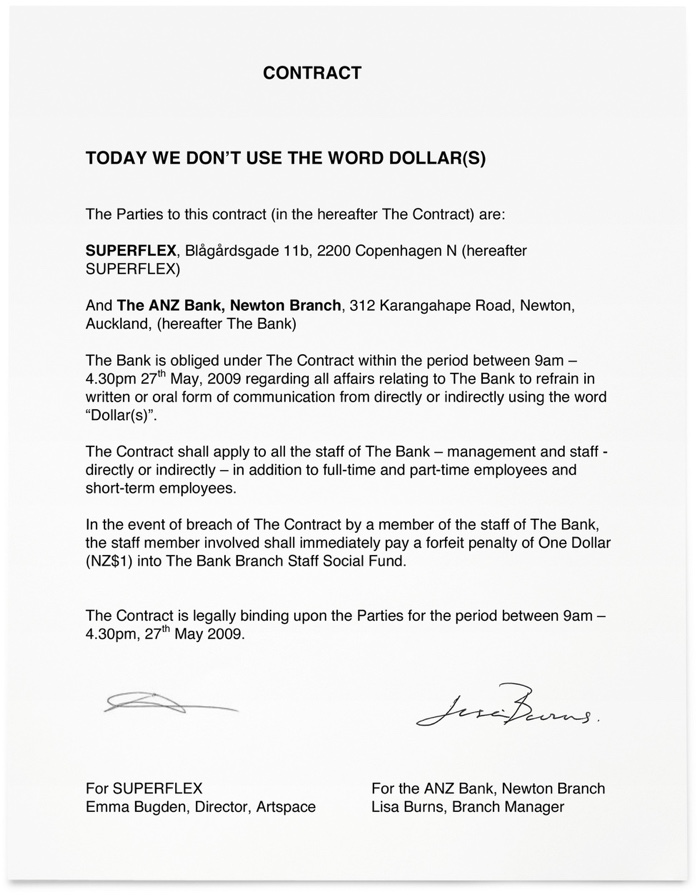
SUPERFLEX, Today we do not use the word ‘Dollars’, 2009
A contract was established between the artists and an Auckland based branch of the ANZ bank that required any staff member to pay one dollar to their staff social fund every time she or he used the word “dollar”. The contract, signed by the bank manager and SUPERFLEX, was printed, framed and displayed in the staff room for the duration of the day.
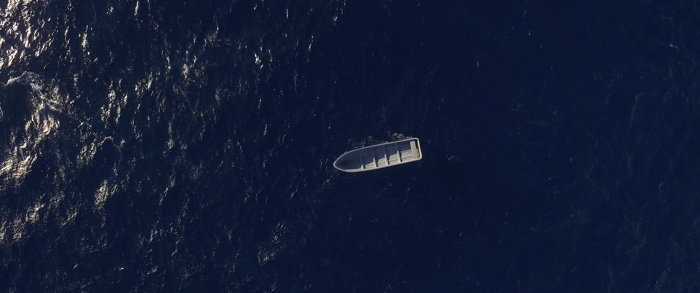
SUPERFLEX, Kwassa Kwassa (Still image from the film), 2015
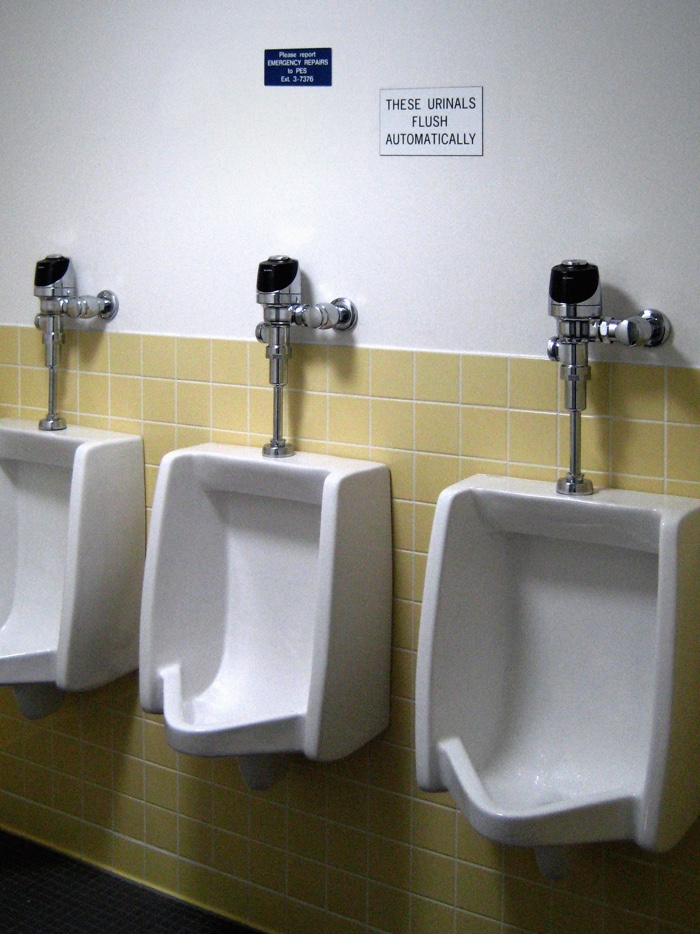
SUPERFLEX, Power Toilets / UN (A copy of the toilets from the United Nations Security Council headquarters, New York installed in Park van Luna, Heerhugowaard for public use), 2010. Photo: Superflex
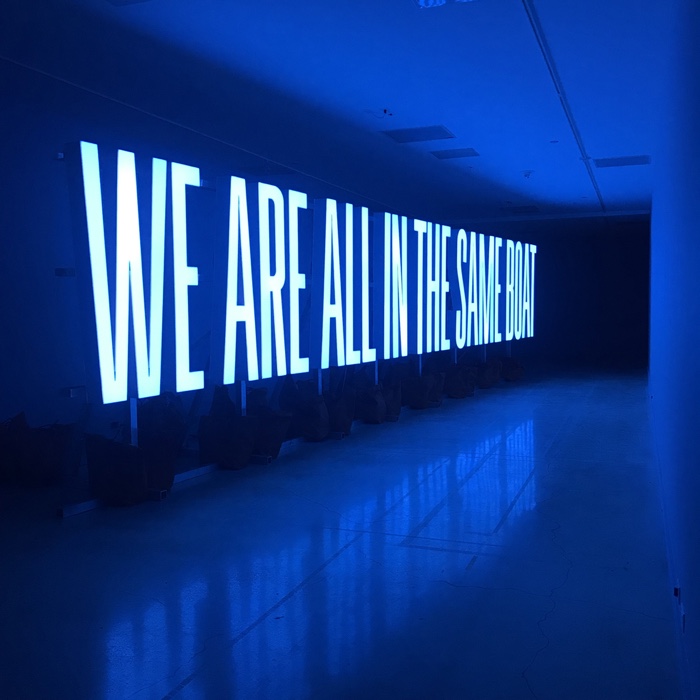
SUPERFLEX, We Are All In The Same Boat, 2018
The book is co-published by the Museum of Art and Design at Miami Dade College (MOAD) which is running SUPERFLEX: We Are All in the Same Boat, a survey of the artists’ work that you can visit until 21 April 2019 if you’re lucky enough to be in the neighbourhood.

